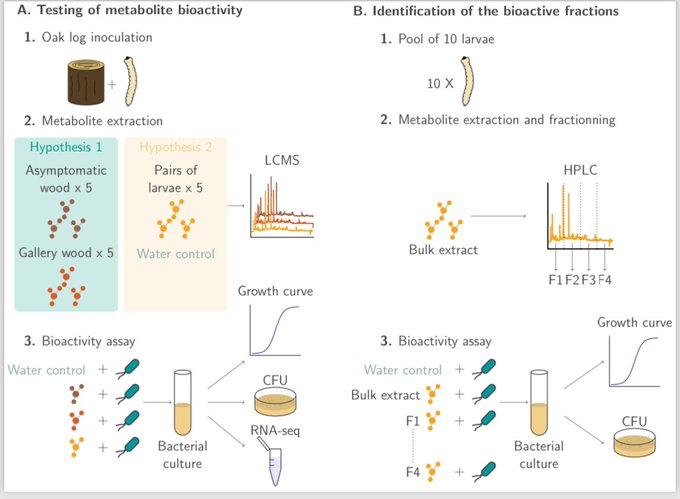Beetle larvae boosts bacterial pathogenicity
The precise pathology of acute oak decline is still unclear, but the disease correlates with the presence of the bacterium Brenneria goodwinii and larvae of the Agrilus biguttatus beetle. This new research preprint from Bac-Stop and Future Oak explores the relationship between the beetle larvae and the bacterium. Previous work had shown that the presence of bark-boring beetle larvae increases the expression of virulence genes in Brenneria goodwinii, making it more likely to cause disease. This research explored the relationship further.
Elicitors upregulate bacterial genes and increase growth rate
Chemical compounds were extracted from both the beetle larvae and woody tissue from larval galleries (tunnels created in oak inner bark by the larvae feeding). These elicitors were then used to test bacterial growth rate, cell density and gene expression profiles. Researchers discovered that these chemical elicitors triggered bacterial proliferation and upregulated 418 genes including virulence genes like those encoding Type III secretion system effectors. This means that, in the presence of beetles, the bacterium becomes much more able to cause disease.
This may be the first report of chemical elicitors from insects triggering bacterial phytopathogen proliferation and virulence, so it has potential wider implications for understanding other plant diseases which involve insect pest-pathogen interactions.

